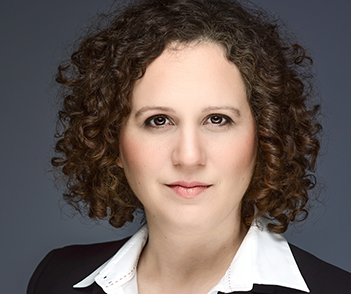Real-world evidence (RWE) can help expand our understanding of the effectiveness of various interventions for people with end stage kidney disease (ESKD). Dialysis organizations are well-positioned to develop RWE based on analyses of real-world data (RWD) because of the extensive electronic health data generated by patients’ frequent interactions with the healthcare system. Despite its methodological challenges, analyses of RWD could provide valuable insights that improve the care of individuals with kidney disease.
ESKD is complex and often complicated by co-existing chronic conditions. It is vital for healthcare providers and individuals living with kidney disease to have all available evidence, including real-world evidence, to make informed treatment decisions.
Traditionally, randomized controlled trials (RCTs) have been the foundation of regulatory approval and treatment decision making. These trials are considered the gold standard for providing evidence on various types of interventions such as treatment and therapeutic approaches. RCTs are crucial in understanding the efficacy and safety of an intervention; however, when they are conducted in small, selected populations under ideal study settings, they may not reflect the intervention’s effectiveness in broader populations in a real-world setting.1
Various systematic reviews evaluating the inclusion of diverse patient populations in clinical trials have found that the majority of RCTs rarely consider individuals with chronic conditions, including those with ESKD, and tend to exclude older people.2,3,4 These exclusions limit our understanding of how these clinical trial findings may be generalizable to individuals with ESKD. In addition, the well-controlled study setting of an efficacy trial may not reflect the real-world healthcare settings.
For example, study-specific clinical assessments of treatment regimens or clinical outcomes may not represent how the treatment is administered or how treatment effects are monitored in routine practice. This could result in attenuated treatment effectiveness in the real world even though the well-controlled study setting shows treatment efficacy. Furthermore, not all clinical trial outcome measures, such as surrogate endpoints, reflect outcomes that matter to patients.5
DATA IN THE REAL WORLD
There is an urgent need to have evidence that relates to the heterogeneity of patient populations and that examines outcomes that matter to people living with chronic conditions.6,7 To date, there is no universally accepted definition of RWE, but several have been proposed. According to the Real-World Evidence Transparency Initiative, RWE is defined as: “Clinical evidence from RWD analysis on the use and potential benefits or risks of an intervention. RWE can be generated by different study designs or analyses including randomized trials (and large simple trials), pragmatic trials, and prospective or retrospective observational studies.”8 Furthermore, RWD is defined as: “Data on patient health status and/or routine healthcare. RWD can come, for example, from electronic health records claims and billing databases, product and disease registries, wearable devices, and electronic applications. Data can also be collected prospectively such as disease registries.”9
EXISTING DATA SOURCES
Dialysis organizations are uniquely positioned to develop RWE because of the extensive electronic health record (EHR) databases that are necessary to support the clinical care of people receiving dialysis. Extensive data is gathered from dialysis clinics and includes longitudinal and routine collection of vital signs, treatment parameters, biochemical measures, medications, and quality-of-life measures. In addition, in-center hemodialysis patients have many interactions with healthcare providers during their dialysis treatments, enabling frequent assessments over long periods of time. Outside of clinics, connected health incorporates data from sources such as home dialysis machines and patient care portals.10
There are advantages and disadvantages of using retrospective RWD (Figure 1). The potential benefits include the study of heterogenous, diverse, and large patient populations that reflect real-world delivery of care over a longer period of time. In addition, the use of existing records allows the examination of multiple exposures, outcomes, and patient subgroups due to large sample sizes. Compared with clinical trials, studies that use RWD may be associated with lower costs and produce results more quickly.
FIGURE 1 | Advantages and disadvantages of real-world data
The potential disadvantages of retrospective studies that use RWD include the potential for selection bias and confounding because randomization is not possible.11 In randomized controlled trials, the random allocation is intended to balance known and unknown factors that can potentially influence the observed treatment effects. If not well-controlled through study design, then these known and unknown factors can result in biased or confounded study results. Furthermore, the use of RWD sources can increase the likelihood that there is missing data or that not all the desired information is collected as part of routine care. There are methodologies to help mitigate these challenges, including restriction of patients, selection of proper unexposed patients through direct matching or propensity score matching, instrumental variables, or proxy measures for variables of interest. Other mitigation strategies can be employed during analysis, including statistically controlling for confounding, stratification by covariates, or imputation methods.12
SUPPORTING REGULATORY DECISIONS
Real-world evidence studies based on RWD can support the regulatory decision-making process for medical devices and pharmaceuticals. In few and selected cases, such as rare or orphan diseases, studies including RWD have been considered in the pre-market approval process by regulatory authorities for new drug applications or line extensions.13 After market approval, studies based on RWD can add to the understanding of the safety and effectiveness of the device or drug when utilized under real-world circumstances.14
Some RWD sources, such as product registries, are specifically developed and designed for post-market device or drug surveillance purposes. In contrast, other RWD sources, such as EHRs and claims data, are usually established for non-regulatory purposes. Therefore, it is important to ensure that the RWE study based on secondary RWD sources fits the regulatory purpose and meets data quality and regulatory standards.15 In addition, there may be country-specific and product designation-specific differences in requirements and acceptance of RWE studies based on RWD in the context of the regulatory decision-making process.
RWE can expand the scientific understanding of the effectiveness and safety of interventions in individuals with ESKD such as determining the effectiveness of combining therapeutics (Figure 2). Despite the methodological challenges, secondary analyses of RWD can complement the existing evidence base and provide valuable insights that improve the care of individuals with kidney disease.
FIGURE 2 | RWE and RWD were vital in determining the effectiveness of combining phosphate binder therapy with sucroferric oxyhydroxide in hemodialysis.
Meet The Experts
References
- Loudon K, Treweek S, Sullivan F, et al. The PRECIS-2 tool: designing trials that are fit for purpose. BMJ 2015;350:h2147. doi:10.1136/bmj.h2147.
- Stoll CRT, Izadi S, Fowler S, et al. Multimorbidity in randomized controlled trials of behavioral interventions: a systematic review. Health Psychol 2019;38(9):831-39. doi:10.1037/hea0000726.
- Kitchlu A, Shapiro J, Amir E, et al. Representation of patients with chronic kidney disease in trials of cancer therapy. JAMA 2018;319(23):2437-39. doi:10.1001/jama.2018.7260.
- Konstantinidis I, Patel S, Camargo M, et al. Representation and reporting of kidney disease in cerebrovascular disease: a systematic review of randomized controlled trials. PLoS One 2017;12(4):e0176145. doi:10.1371/journal.pone.0176145.
- O’Hare AM, Rodriguez RA, Bowling CB. Caring for patients with kidney disease: shifting the paradigm from evidence-based medicine to patient-centered care. Nephrol Dial Transplant 2016;31(3):368-75. doi:10.1093/ndt/gfv003.
- Sherman RE, Anderson SA, Dal Pan GJ, et al. Real-world evidence—what is it and what can it tell us? N Engl J Med 2016;375(23):2293-97. doi:10.1056/NEJMsb1609216.
- O’Hare AM, et al. Caring for patients with kidney disease.
- Orsini LS, Berger M, Crown W, et al. Improving transparency to build trust in real-world secondary data studies for hypothesis testing—why, what, and how: recommendations and a road map from the Real-World Evidence Transparency Initiative. Value Health 2020;23(9):1128-36. doi:10.1016/j.jval.2020.04.002.
- Ibid.
- Chaudhuri S, Han H, Muchiutti C, et al. Remote treatment monitoring on hospitalization and technique failure rates in peritoneal dialysis patients. Kidney360 2020 March;1 (3):191-202. https://doi.org/10.34067/KID.0000302019.
- Brookhart MA, Sturmer T, Glynn RJ, et al. Confounding control in healthcare database research: challenges and potential approaches. Med Care 2010;48(6 Suppl):S114-20. doi:10.1097/MLR.0b013e3181dbebe3.
- Rothman K, Greenland S, Lash TL. Modern Epidemiology. 3rd ed. Philadelphia: Lippincott Williams & Wilkins, 2008.
- Bolislis WR, Fay M, Kühler TC. Use of real-world data for new drug applications and line extensions. Clin Ther 2020;42(5):926-38. doi: 10.1016/j. clinthera.2020.03.006.
- Brown JP, Wing K, Evans SJ, et al. Use of real-world evidence in postmarketing medicines regulation in the European Union: a systematic assessment of European Medicines Agency referrals 2013-2017. BMJ Open 2019;9(10):e028133. doi:10.1136/bmjopen-2018-028133.
- US Food and Drug Administration. Use of real-world evidence to support regulatory decision-making for medical devices: guidance for industry and Food and Drug Administration staff. August 2017. https://www.fda.gov/regulatory-information/search-fda-guidance-documents/use-real-world-evidence-support-regulatory-decision-making-medical-devices.

